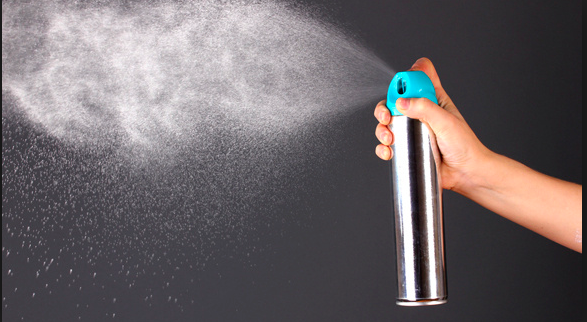Charles William Pearson v. Paula Pearson & Nationwide
Reversing and Remanding. Jefferson (Perry J.)
Trial judge erred on duty and foreseseeability of harm in granting summary judgement dismissing husband’s claims against his wife who had placed unbeknownst to him an automatic air freshener sprayer above toilet which went off in his face causing asthmatic bronchitis exacerbated by chemical exposure in spouse.
LAMBERT, D., JUDGE: Charles Pearson appeals the entry of summary judgment by the Jefferson Circuit Court in the personal injury negligence claim asserted against his wife, Paula Pearson. Charles asks us to review whether the trial court properly concluded that Paula lacked a duty due to the unforeseeable nature of the injury. Because we disagree with the trial court as to its legal determination regarding foreseeability, we reverse the entry of summary judgment and remand the matter to the trial court.
Charles was alone at the parties’ home on September 25, 2010. At some point, he proceeded to the bathroom. Unbeknownst to Charles, Paula had purchased a motion-sensing air freshener device, and placed it on a shelf above the toilet. The device, detecting Charles’ movement in the room, released a mist of its contents directly into Charles’ face as he stood in front of the toilet. Charles inhaled and ingested this substance. He experienced immediate difficulty breathing and attempted to wash the chemicals off—to limited effect. He estimated it took him five to seven minutes after leaving the bathroom to catch his breath. Charles later returned to investigate what had happened, and discovered the device.
As a result of the face-spraying incident, Charles developed asthmatic bronchitis exacerbated by chemicals. He was hospitalized, and later filed suit against his wife for negligence and nationwide insurance company for bad faith under the homeowner’s policy. Various experts testified showing that the wife’s placement of the sprayer was unsafe and not consistent with the directions. The defense moved for summary judgment which was initially denied by the judge holding that the record presented unresolved issues of material fact. About a month later the judge entered summary judgment on his own in favor of the defense.
The trial court’s ruling was — Because Charles does not fit into a category of a person entitled to a heightened duty of care under Kentucky law, Paula owed Charles no more duty than the universal duty of care. No argument can be made that the harm allegedly suffered by Charles was generally foreseeable by Paula, who installed a device which functioned in the manner in which it was designed to function.
As such, the “universal duty of care” applies in this case. See Jenkins v. Best, 250 S.W.3d 680, 691 (Ky. App. 2007) (quoting Kirschner v. Louisville Gas & Elec. Co., 743 S.W.2d 840, 848 (Ky. 1988) (“The duty to exercise reasonable care commensurate with the circumstances not to injure other human beings is the universal duty of care owed by everyone to everyone.”)) Kentucky appellate courts have repeatedly held that the so-called universal duty is anything but universal,2 and have narrowed its application to instances where the harm resulting from a defendant’s act was foreseeable. T & M Jewelry, Inc. v. Hicks, 189 S.W.3d 526, 531 (Ky. 2006).
It is at this point that we disagree with the trial court, which concluded that “No argument can be made that the harm allegedly suffered by Charles was generally foreseeable by Paula[.]” This conclusion, premised on the idea that the air freshener performed as designed, ignores the fact that Paula admittedly did not place the device as intended by its designers—indeed she placed it in a manner directly contradicted by the manufacturer’s safety warnings. The consequences of misusing a product are within the natural range of effect of that misuse. Both the manufacturer’s warnings and common-sense caution users against spraying the device directly into someone’s face, and an “injury of some kind” flows naturally from that. Therefore, we conclude that the trial court erred in its conclusion that Charles’ alleged injury was not foreseeable.
The Court also rejected the argument that the spouse could not sue the other spouse under a universal theory of liability. See, Arnett v. Thompson, 433 S.W.2d 109, 114 (Ky. 1968) (“[T]he policy of the law of this state is to allow recovery for injuries or death resulting from negligence,” regardless of whether the plaintiff and defendant are husband and wife).
Paula also argues that the record does not establish causation. However, the trial court’s ruling dealt solely with the legal issues of foreseeability and duty without considering the factual issue of causation. Because the issue of causation had no effect on the ruling of the trial court in the order from which this appeal was taken, that issue is not before this Court.
After examining the record, we conclude the trial court erred in concluding as a matter of law that the alleged injury suffered by Charles was unforeseeable. The trial court also erred in its ultimate ruling that Paula lacked any cognizable duty to Charles. For that reason, we reverse the trial court’s entry of summary judgment and remand the matter for further proceedings.

